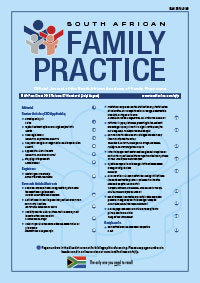Pattern of inappropriate cases presenting to the Accident and Emergency Department in a Nigeria Tertiary Hospital
Keywords:
Inappropriate use, accident and emergency department, morbidity, Nigeria.
Abstract
Background: Although the primary mission of the Accident and Emergency Department(AED) is to provide initial treatment for life-threatening conditions, some patients make inappropriate use of the service. This study is aimed to determine the level of inappropriate use and the morbidity pattern of such patients presenting to the department in a tertiary hospital in Nigeria. Materials and Methods: A cross-sectional descriptive study in which inappropriate users of the AED of University of Port Harcourt Teaching Hospital were recruited. Data on socio-demographic characteristics and diagnoses based on ICPC-2 were collected from them and analysed using SPSS version 17. Results: A total of 430 patients were recruited with age range of 18 - 62 years and mean of 38.45± 7.2 years. Considering the socio-demographic characteristics, only the association between gender and utilization of the AED was statistically significant (p = 0.014). The prevalence of inappropriate use of the AED was 37.7%. The most frequent diagnosis among inappropriate users using the ICPC rubrics was polyuria and glycosuria (9.88%). When the cases were listed by the organ systems according to ICPC chapters, it was found that the commonest diagnoses were gastrointestinal (20.9%) and general and unspecified conditions(17.7%). Psychological conditions were not identified in this study. The most common reason for inappropriately presentation at the AED was patients referring themselves for quick attention (46.3%). Conclusions: The level of inappropriate utilization of the accident and emergency department was very high in this institution. Creation of public awareness will curtail this sickness behavior. (Full text available online at www.medpharm.tandfonline.com/ojfp) S Afr Fam Pract 2015; DOI: 10.1080/20786190.2014.978114
Published
2015-08-26
Section
Research Articles
By submitting manuscripts to SAFP, authors of original articles are assigning copyright to the South African Academy of Family Physicians. Copyright of review articles are assigned to the Publisher, Medpharm Publications (Pty) Ltd, unless otherwise specified. Authors may use their own work after publication without written permission, provided they acknowledge the original source. Individuals and academic institutions may freely copy and distribute articles published in SAFP for educational and research purposes without obtaining permission.

